Articles and Features
Robert Longo : Fugitive Images
Metro Pictures

Christian Viveros-Fauné | Kulchur Vulture
Viveros-Fauné is Artland’s inaugural Chief Critic and the contributor of this regular column. Based in New York City, he writes primarily about exhibitions and the cultural landscape there. His articles also feature Artland’s revolutionary 3D exhibition tours that enable the viewer to pay compelling virtual visits to actual exhibition spaces in support of the texts.
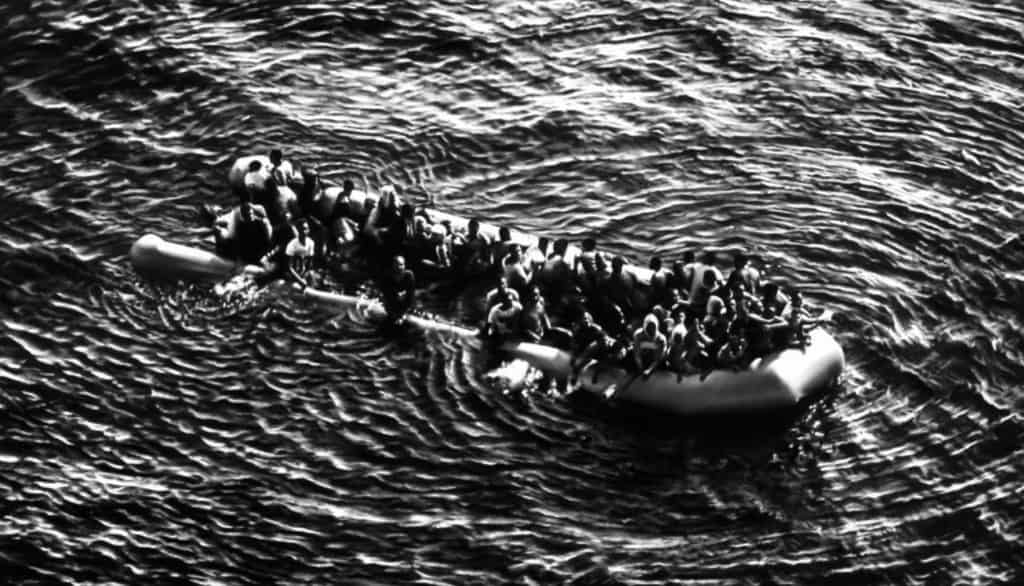
A picture taken from the moonbird aircraft of the German NGO Sea-Watch shows the migrant rescue operations of another NGO working in the Mediterranean sea on May 5, 2017. Courtesy of the artist and Metro Pictures, New York
Though making beauty out of disaster would appear to be a contradictory pursuit, it boasts a venerable tradition. Goya’s depictions of insurrection and bloodletting in the paintings The Second and Third of May, 1808 are a case in point. Ditto for Théodore Géricault’s shipwreck The Raft of the Medusa and Picasso’s antiwar masterpiece Guernica. In each of these cases—and in more recent artworks like the music video for the anti-gun violence song “This Is America” by Donald Glover, aka Childish Gambino—catastrophes of various kinds take shape as iconic memorials. Call them epitaphs for humanity’s worst mistakes, reappraised, reconceived and reimagined.
Iconic memorials, in the form of giant charcoal on paper drawings of global media images of death and disaster, are this month’s monumental fare at Chelsea’s Metro Pictures gallery. They have become the stock in trade of artist Robert Longo, a 1980s wunderkind whose Reagan-era pictures of contorted businessmen once drew comparisons to the paintings of commercial juggernauts Julian Schnabel, David Salle and Eric Fischl. Since 2014, Longo has zeroed in on blatant politics as subject matter with remarkable directness and impressive skill. That year the New York artist created a 10-foot wide hyperrealist depiction of a battle-ready phalanx of Ferguson, MO, police; in 2016, using an altered photograph taken by Doctors Without Borders, he drew a 23-foot triptych of immigrants pitching dangerously on a dinghy in the Mediterranean.
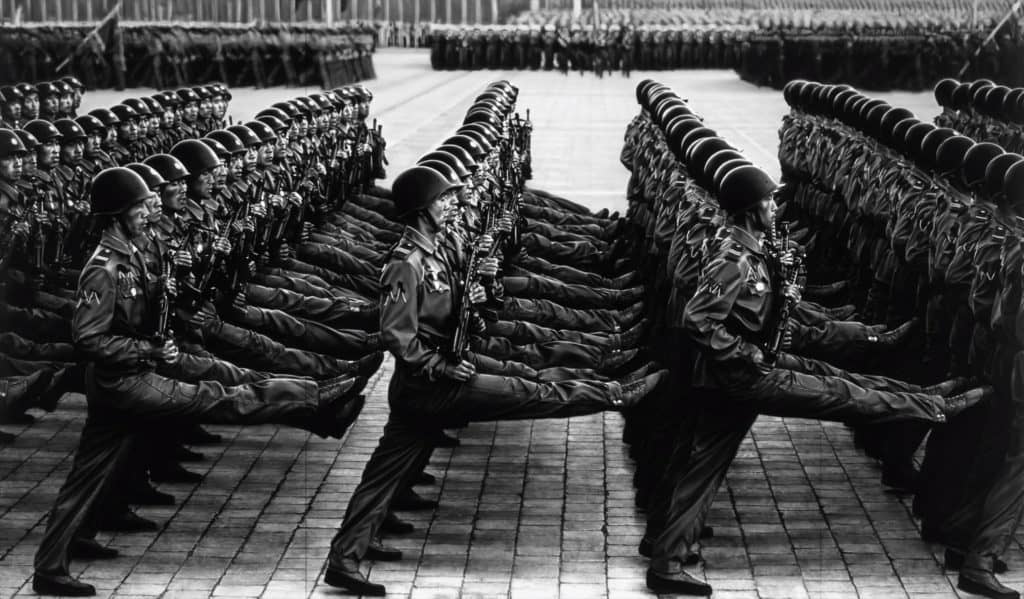
Untitled (Marching Soldiers; (Party Foundation Day) Pyongyang, North Korea; October 10, 2015, 2019, charcoal on mounted paper, 81 1/2 x 140 inches (image), 207 x 355.6 cm, 87 3/8 x 145 7/8 inches (frame) 221.9 x 370.5 cm
North Korean soldiers in historic uniforms march during a parade on the Kim Il Sung Square, Saturday, Oct. 10, 2015, in Pyongyang, North Korea. North Korean leader Kim Jong Un declared that his country was ready to stand up to any threat posed by the United States as he spoke at a lavish military parade to mark the 70th anniversary of the North’s ruling party and trumpet his third-generation leadership. Courtesy of the artist and Metro Pictures, New York
“Call them epitaphs for humanity’s worst mistakes, reappraised, reconceived and reimagined.”
For his most recent outing Longo has expanded his aptly named “Destroyer Cycle.” On view are eight microscopically rendered, XXXL monuments to some of our era’s most impactful digital and print pictures. Among these are meticulous drawings of a video-game-like capture of a Russian air strike in Syria, a caravan of thousands of Central American migrants trudging toward the U.S.-Mexico border, a detachment of North Korean soldiers goose-stepping across a parade square, and a group of wintry Jewish tombstones defaced by swastikas. In each, the artist recovers memorable images from a ceaseless torrent of visuals sprung from various media. Consider Longo’s use of scale—as well as “Fugitive Images,” the title of his current show—as a hedge against forgetting. Both also do double duty by celebrating the enduring act of drawing itself.
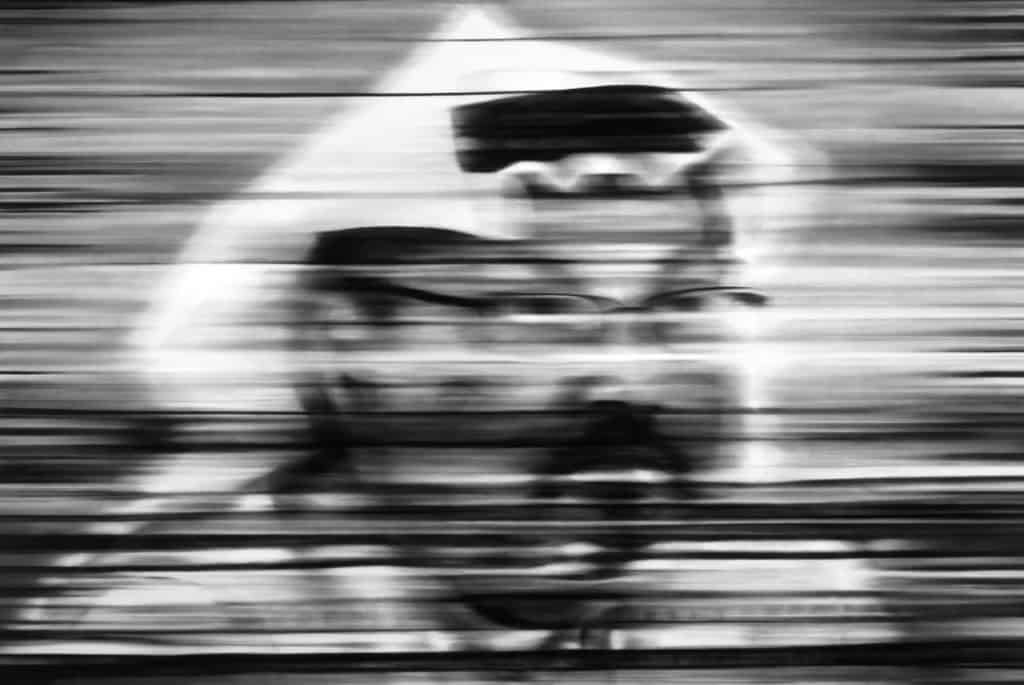
Untitled (Jamal Ahmad Khashoggi; Istanbul, Turkey; October 2, 2018), 2019, charcoal on mounted paper, 87 1/2 x 120 inches (image), 222.3 x 304.8 cm, 93 3/8 x 125 7/8 inches (frame) 237.2 x 319.7 cm
Jamal Ahmad Khashoggi was a Saudi Arabian dissident, author, columnist for The Washington Post, and a general manager and editor-in-chief of Al-Arab News Channel who was assassinated at
the Saudi Arabian consulate in Istanbul on 2 October 2018 by agents of the Saudi government. Courtesy of the artist and Metro Pictures, New York
An unlikely portrait of the late Jamal Khashoggi proves central to the exhibition. A head-and-shoulders drawing of Longo’s subject disappearing into what looks like a field of CCTV static, his depiction of the murdered journalist gains intensity where smudged horizontal lines of black charcoal and a sea of white paper give way to uncertain grays. The same goes for the artist’s panoramic view of Congress seated inside the Capitol Building’s House of Representatives chamber. Massed together for Donald Trump’s second State of the Union Address, Longo describes mostly dark-suited male figures enveloped in apocalyptic darkness in his mammoth drawing—excepting where a swath of female representatives and lawmakers displays contrasting areas of revelatory light.
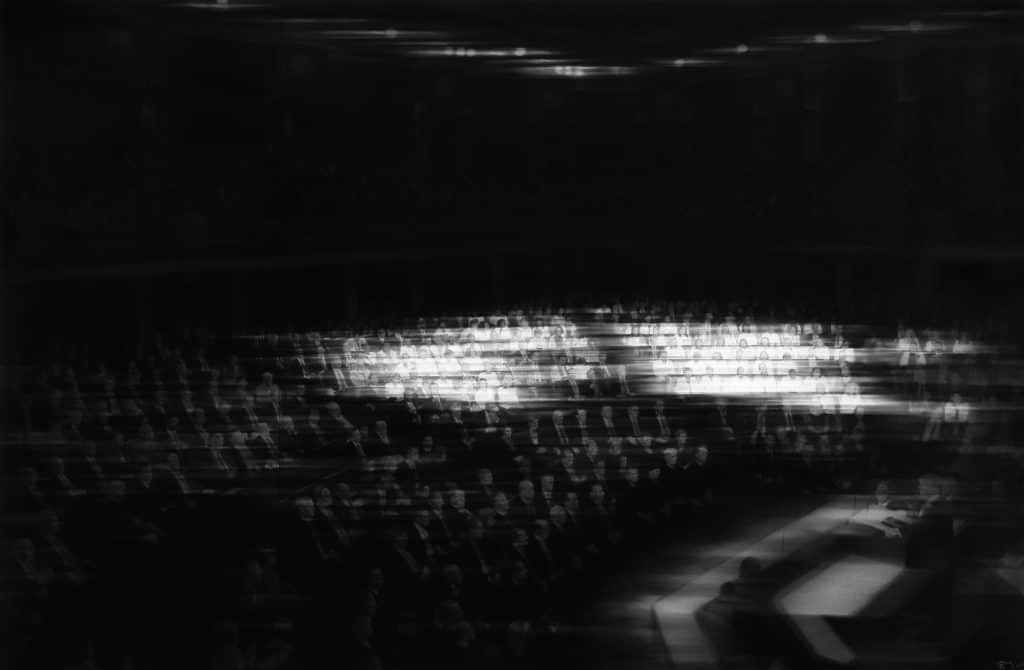
Untitled (State of the Union; Washington, D. C., USA; February 5, 2019), 2019, charcoal on mounted paper, 96 x 146 inches (image), 243.8 x 370.8 cm, 101 7/8 x 151 7/8 inches (frame) 258.8 x 385.8 cm
At President Trump’s second State of the Union address, female members of the 116th Congress, dressed in white to reference the suffragette movement. A hundred and three women are serving in the House of Representatives, which makes this Congress the most female in history, as well as the most diverse. Courtesy of the artist and Metro Pictures, New York
Longo’s blurred beacon of light—which is owed to his adaptation of various photographs of congresswomen wearing white to the actual February 5, 2019 event—recalls a line from the poet Marianne Moore: “by darkness a star is perfected.” Moore’s meaning is deceptively simple: absent other characteristics, a thing is known by contrast. In our time of topsy-turvy ethics and news fakery, the law is known by its violation. Similarly, the images Longo rescues from the news and the internet can be recognized by opposition. They glimmer when pitted against a flood of lesser visual data, and blaze like brushfires when elevated by his capacity to transform them into memorials in black, white and every smoky and dappled shade in between.
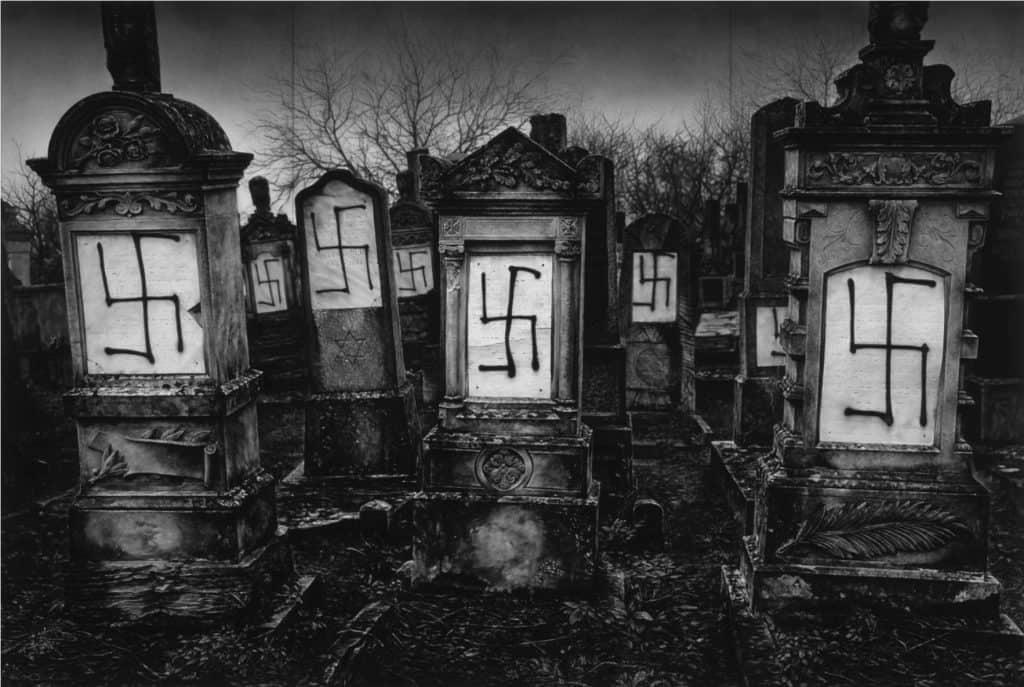
Untitled (Defaced Jewish Cemetery; Strasbourg, France; December 14, 2018), 2019, charcoal on mounted paper, 96 x144 inches (image), 243.8 x 365.8 cm, 101 7/8 x 149 7/8 inches (frame) 258.8 x 380.7 cm
The Jewish cemetery in Herrlisheim, north of Strasbourg, France. 37 tombstones and a monument to Holocaust victims had been defaced with swastikas and other anti-Semitic graffiti. Courtesy of the artist and Metro Pictures, New York. Courtesy of the artist and Metro Pictures, New York
Related Reading
Robert Longo Website
Metro Pictures Gallery Website
Kulchur Vulture No.6, Alex Da Corte, Marigolds | Karma NYC